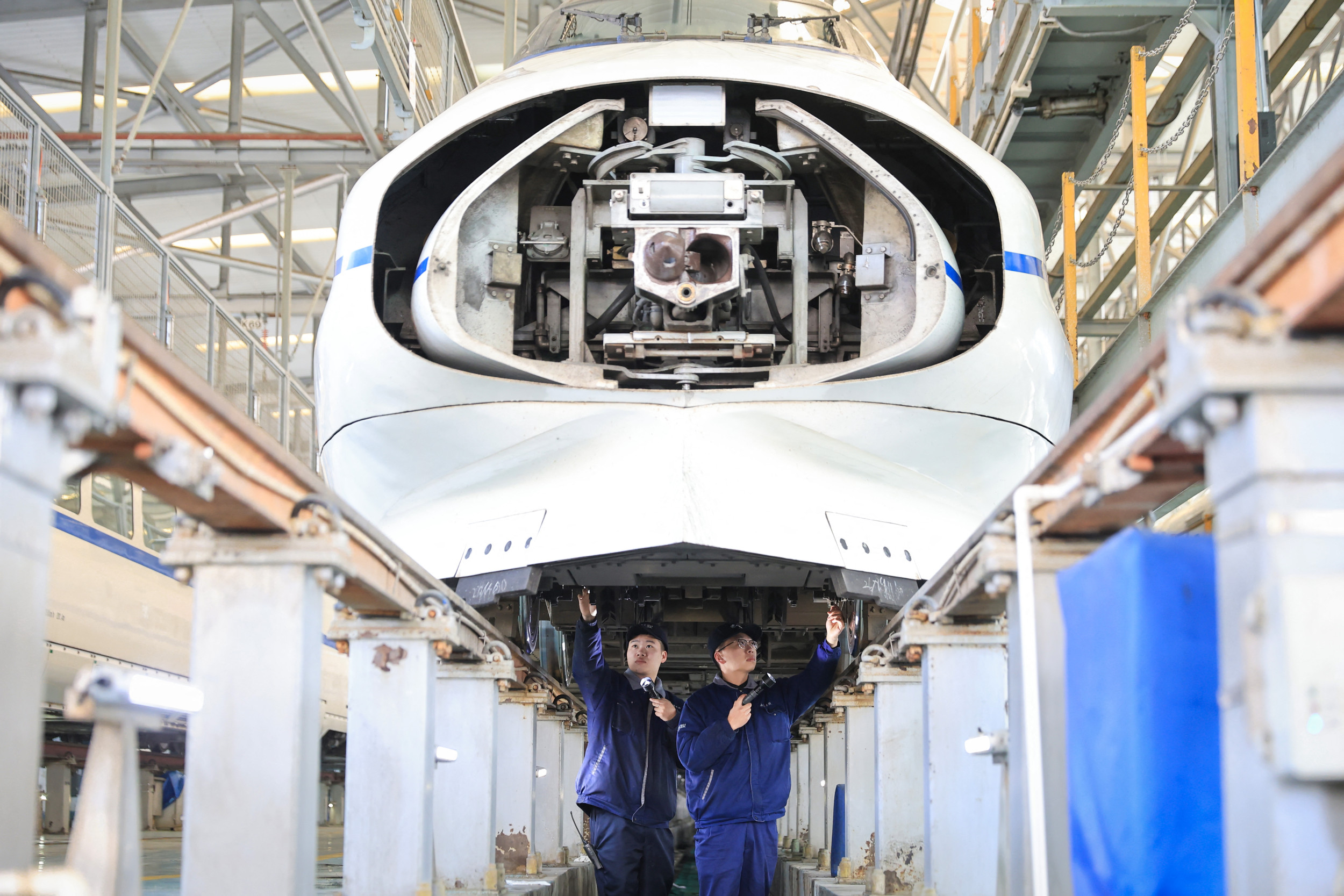China has successfully tested a magnetic levitation (Maglev) technology which could see trains travel faster than most planes.
The most recent test, demonstrated at Donghu Laboratory in Hubei Province, saw a 1.1-ton Maglev train accelerating to 404 mph in just under 7 seconds over 1,968 feet. The test follows a trial of the same technology last year, which achieved speeds of over 620 mph—faster than the flight of many commercial planes.
Newsweek contacted the Chinese Ministry of Transport for more information via email.
Why It Matters
The successful results in June show that the Maglev technology, which produced speeds of over 600 mph during trials last year in the Shanxi province is reproducible, meaning it could become part of China’s rail network soon.
For comparison, commercial passenger aircrafts typically travel at around 547 to 575 mph, meaning China could soon have the ability to deploy trains that run faster than standard air travel.
What To Know
June’s test, which was carried out by researchers at Donghu Laboratory, used self-developed electromagnetic propulsion and suspension systems that allow the train to levitate above the track, virtually eliminating friction and only requiring it to overcome air resistance.
The measurement and positioning accuracy, according to Li Weichao, the lab’s technology director, reached a precision of 4 millimeters, which is critical for safety at extreme speeds.
Maglev technology uses opposing magnetic fields to lift the train off its track, which reduces friction and allows for smoother, quieter, and faster movement.
At high speeds, air resistance becomes the principal limitation, a hurdle that engineers have minimized by using low-vacuum tubes to allow even greater acceleration. New artificial intelligence (AI)-guided suspension systems and precise electromagnetic controls further support extreme speeds and passenger comfort.
Currently, only China, Japan, and South Korea operate commercial Maglev systems, with Beijing already running the world’s longest commercial Maglev line between Shanghai and Pudong International Airport at speeds up to 267 mph.
China plans to deploy the ultra-high-speed maglev network to connect major cities nationwide, such as Beijing and Shanghai, which could reduce travel times between cities to 90 minutes or less.
Getty Images
What People Are Saying
Director, High-speed Maglev Electromagnetic Propulsion Technology Innovation Center, Donghu Laboratory, Li Weichao, told CGTN last month: “This is the fastest speed in the world. It’s typical operating speed is 800 km/h. The entire construction is expected to be completed by the end of this year, and the platform will meet the conditions for acceptance.”
What Happens Next?
Engineers at Donghu Laboratory expect to complete the full construction of their high-speed track by the end of 2025.


